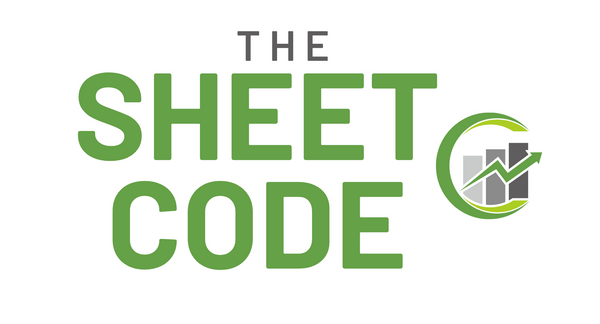How to Take Control of Your Income (Even If It Changes Month to Month)
Before you track what you spend, you need to plan and track what you earn.
It’s easy to feel like your income is the problem. But in most cases, the real issue is that you don’t have a system that gives your money a job. Whether you’re working a 9–5, freelancing, or juggling side hustles, control doesn’t come from more, it comes from structure.
Let’s talk about how to actually build an income plan that works—even when your pay isn’t consistent.
The Problem: You’re Earning, But It’s Not Adding Up
Every month, money comes in. But it never feels like enough. Or worse, you can’t remember where it all went. Suddenly it's there and then it's gone.
That’s because most people skip the one thing that gives budgeting power: an income plan. A budget starts with what you earn, not with what you spend.
They might track expenses or log transactions, but without a clear map for how income is distributed, those numbers mean very little. Understanding how much money you have to budget is an essential first step.
Why You Need an Income Plan—Not Just a Budget
Most budgeting tools focus on expenses, not income. But if you don’t start by assigning purpose to what you earn, you’re always reacting instead of leading.
A real income plan does three things:
- Accounts for every source of income – main job, side hustle, freelance work etc. Yes, we've your tax returns.
- Separates essential from flexible income – this is a non-option, you must understand what your fixed income is then plan the flexible income.
- Distributes funds intentionally – into needs, wants, savings, and debt, the 50/30/20 rule is a great step, check out our blog post here for more info.
Without this, even a great budgeting system can fall flat.
How to Build One (Without Guesswork)
The best system is one that removes confusion and helps you make confident money decisions every single month. Below is a great way to get started on income tracking.
Here’s how to start:
Step 1: Map All Your Income Streams
List every income source including inconsistent ones. Our Ultimate Finance Package lets you track both fixed and variable income in one place. Label them accordingly, for example - 'Paycheck 1 - Fixed', 'Side Hustle - Variable', etc. This will help you understand the fluctuations of the variable income against your fixed income.
Step 2: Separate Base Income from Bonus Income
Build your core plan on income you can rely on. Treat fluctuating income as a bonus assign it toward goals, not necessities. This could include guilt-free spending or even accelerate your debt repayment strategy. One rule must be followed - variable income is not for your needs. Your fixed income must cover necessities or you are in fragile state with your budget.
Step 3: Assign Every Dollar a Role
Use categories that reflect your life bills, savings, sinking funds, guilt-free spending. Our system gives you a flexible framework to make that easy. Sometimes tracking every expense can backfire - our post here covers ways to fix it.
If You’re Working Hard but Still Feel Lost...
This is the part no one tells you: You don’t need more hustle. You need more clarity.
You need a system that makes your money work for you—not one that just shows you where it went.
Take Control with the Right Tool
Our Ultimate Finance Package was built exactly for this.
✅ Track all your income easily with a monthly cash flow spreadsheet system
✅ Separate your needs, wants, and goals - easily follow the 50/30/20 rule
✅ Stay in control no matter how your paychecks shift - see where your money is going, plan and strategize
👉 [Try the Ultimate Finance Package here]
Next Up: The Hidden Expenses Quietly Sabotaging Your Budget
Even with a great income plan, your progress can stall if you’re bleeding money in small, sneaky ways. In next week’s post, we’ll uncover the hidden costs that throw off even the best budgeting plans.

